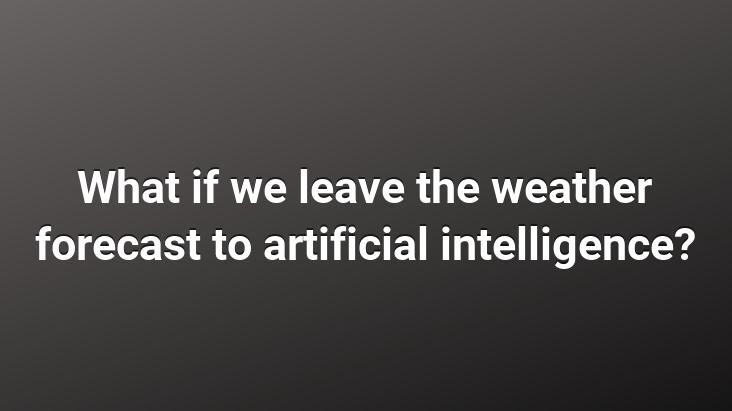
Forecasting is based on a large data collection network. Adding high-resolution remote sensors lays the foundation for more accurate and precise weather forecasting. But it also brings with it the challenge of understanding how to most effectively process all this data.
Traditionally, weather forecasting focuses on developing complex dynamic numerical models aimed at more accurate forecasts.. However, due to some model disadvantages such as uncertainty of weather, compatibility within coordinates, this method may fail to meet the requirements of different use cases.. Artificial intelligence and data-driven methods have stepped in as a solution to this failure.
Artificial intelligence is not a new thing for meteorology.. It has found its place in weather forecasting since the 80’s when neural networks were introduced.. With artificial intelligence models that have gained power and momentum in many sectors in recent years, meteorological researchers apply this technology in satellite data processing, broadcasting, rare weather events such as typhoons, other business and environmental analysis.
Earth and Space Sciences Journal. identifies AI technologies as key to reducing meteorologists’ workloads and delivering more accurate and timely forecasts. The US National Oceanic and Atmospheric Administration (NOAA) also says the incorporation of AI and machine learning significantly improves the ability to predict rare dangerous weather events like storms and hurricanes.
What are the world’s biggest companies doing in this space?
Industry-leading tech giant Google presented new research on the development of deep learning models for precipitation forecasts in December 2019. Team tackled forecasting as image-to-image translation issue. Harnessed the power of the ubiquitous UNET evolutionary neural network. U-Net has a network architecture where layers iteratively reduce the resolution of images passing through it during the encoding phase.. The low-dimensional representations of the image created by the encoding stage are expanded to higher resolutions in the next decoding stage.. In tests, the proposed system outperformed three commonly used models: optical flow, persistence, and NOAA’s one-hour numerical HRRR release estimates.
Large companies are also partnering to keep up with the trend.. IBM acquired Weather Company in 2015. The combination of technology and expertise in weather data from the two companies created the Atmospheric Forecast System that provides personalized, actionable insights to customers around the world.. The system provides a wide range of forecasting services, including forecasts of weather-related power outages 72 hours in advance using machine learning models.. The system is said to be the first operational global weather model running on GPU-accelerated servers to handle increased resolution and frequent updates. looking for ways. The bureau worked with tech giant Huawei to create a meteorological cloud platform capable of 5G and AI to accelerate the development, training, and deployment of forecast models in 1-2 weeks to 3 days or less. positions it as a game changer in the industry. ClimaCell’s patented MicroWeather engine applies machine learning to historical weather data to improve weather forecast accuracy. The company recently launched a historic weather data archive for AI model training derived from a global network of wireless signals, connected cars, airplanes, street cameras, drones, and internet of things (IoT) devices.